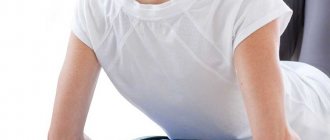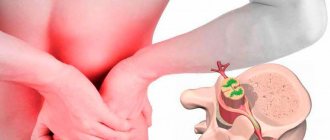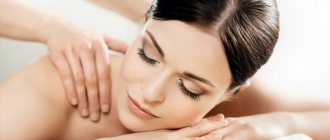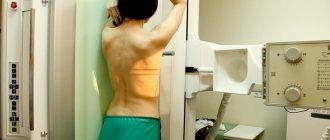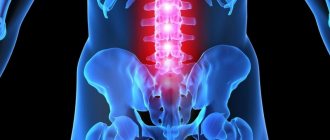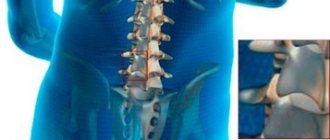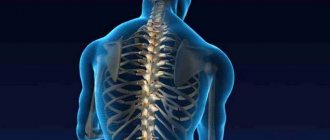The dynamics of the spread of osteochondrosis is characterized by an increasing pace - degenerative changes are increasingly diagnosed in young patients who have just crossed the 20-year age limit. Back massage helps prevent deterioration of the spine in the presence of osteochondrosis, which in medical statistics is becoming increasingly firmly established in the list of the most common diseases of the musculoskeletal system.
Osteochondrosis: what it is and the reasons for its appearance
At a young age, the spinal column has an increased margin of safety, so even with prolonged exposure to adverse factors, the destruction of the intervertebral discs occurs slowly. The natural mechanisms of aging and wear and tear of the body gradually accelerate this process. After 25 years, most patients periodically experience back pain, so they increasingly begin to think about what it is and how osteochondrosis affects the body. From a medical point of view, the pathology includes dystrophic changes in the cartilage tissue in the spine, which reduces its mobility. Displacement of bone tissue, causing a reflex spasm, forms a pain syndrome.
Destructive changes provoke displacement of the intervertebral discs, pinching of the radicular nerves and the appearance of osteophytes (bone growths) in the spine. Without the use of therapeutic and prophylactic agents, the pathological condition can progress, causing conditions that must subsequently be corrected surgically.
Causes of osteochondrosis:
- age-related changes;
- incorrect body position;
- physical inactivity (lack of activity);
- mechanical injuries;
- transportation of heavy objects;
- weak muscle frame;
- postural disorders (including scoliosis);
- genetic predisposition;
- flat feet;
- excess weight;
- sleeping on a non-ergonomic pillow;
- professional sports.
In women, osteochondrosis develops more quickly due to wearing shoes with heels - a change in load leads to displacement of the vertebrae. Pregnancy is another common factor in the development of the disease: fetal growth provokes displacement of the lumbar vertebrae, so closer to childbirth, expectant mothers often experience pain localized in the lumbosacral region.
Heavy physical activity, typical for men, causes osteochondrosis and accompanying degenerative changes more often for this reason. The stronger sex also often abuses smoking and drinking alcoholic beverages, which worsen metabolic processes in the body, including inside the intervertebral discs. Intoxication of the body reduces the amount of intra-articular fluid and leads to the leaching of calcium from the vertebrae.
Spinal pain does not necessarily indicate cartilage damage
A fall or an uncomfortable position can only damage the ligaments and muscle fibers, which cause pain due to the resulting hypertonicity.
Why does osteochondrosis appear?
Osteochondrosis is a disease that affects the human musculoskeletal system. Its main cause is disturbances in the structures of the spinal column of vital metabolic processes. In this case, degenerative changes occur, primarily affecting the intervertebral discs (their height decreases, as well as the distance between them), which in turn leads to damage to the nerve endings and arteries. This disrupts a person’s motor activity and the following processes occur:
- muscle asymmetry appears;
- muscle tissue becomes scarred;
- pain occurs (including painful spasms).
Massage for osteochondrosis helps tone muscles, eliminate pain, and restore blood supply (including blood supply to the brain). In some cases, such a massage is much more effective and better than physical therapy. It is only important that the massage is prescribed and performed by an experienced specialist who has extensive practical and theoretical experience and knows the intricacies of performing this literally jewelry work. Our specialists working at the Arnovel Aesthetic Medicine Center regularly improve their skills to offer patients the latest innovations in the field of manual therapy.
Symptoms of osteochondrosis
Comparing your own physical sensations with the symptoms of osteochondrosis helps to fully convey to the therapist a list of existing unpleasant sensations, so that the specialist can accurately make the correct diagnosis.
Symptoms of osteochondrosis:
- limited mobility;
- pain in the chest, neck or lower back;
- numbness of the limbs;
- ringing and other noises in the head;
- dizziness;
- pressure surges;
- headache;
- crunching when moving (often in the neck).
As the patient's condition worsens, the number of symptoms expands to the appearance of fainting, weakening of memory and reaction speed. The feeling of stiffness and numbness is diagnosed in the morning, and during the day the sensations periodically decrease or increase in intensity.
The type of pain in osteochondrosis is acute, piercing and forces a person to abruptly stop moving.
Degrees of osteochondrosis: 1, 2, 3, 4 stages
Regardless of the localization of the pathology - in the neck, lower back or chest, with all types of osteochondrosis, the same pathological changes are observed inside the vertebrae and discs that separate them.
- Stage 1.
Initial changes are associated with a slight decrease in the height of the disc, but already in this form the displacement leads to the appearance of cracks in the fibrous ring and dehydration (dehydration) of the vertebral core. Pain in a person appears only when an uncomfortable position is maintained for a long time. - Stage 2.
Further reduction in the height of the disc leads to weakening of the ligaments and spinal muscles, which begin to hold the vertebrae worse. For this reason, their mobility increases, especially during physical activity. At stage 2, the appearance of bone outgrowths (osteophytes) is possible, while in patients with stage 3 they are already diagnosed in 100% of cases. - Stage 3.
The disc, experiencing excessive pressure from adjacent vertebrae, takes on a flattened shape, in which part of it extends beyond the limits of contact with the vertebrae. The patient is diagnosed with protrusions (“protrusions”), prolapses, and arthrosis of the intervertebral joints. With this form of the disease, back massage for osteochondrosis can still help the patient prevent complications from occurring. Symptoms of the third stage: prolonged pain arising from pinched nerve roots. - Stage 4.
Rupture of the fibrous ring leads to the appearance of an intervertebral hernia, causing acute pain and problems with movement (ankylosis develops - immobility of the vertebral joints). The type of treatment chosen depends on the size of the hernia: surgery is indicated in the presence of a large prolapse - more than 12 mm, as well as signs of sequestration (separation of part of the disc and its entry into the area of the spinal canal adjacent to the vertebra).
The benefits of back massage for osteochondrosis
Destructive changes in the vertebrae develop mainly due to lack of physical activity, but a course of back massage can restore the lost useful load. Additionally, muscle kneading leads to increased blood flow, which triggers the process of self-healing in the body if the cause of health problems relates to other factors that caused the pathology.
BENEFITS FOR CERVICAL OSTEOCHONDROSIS
- relief from spasms of the cervical and occipital muscles;
- improving brain nutrition;
- restoration of the nervous system;
- neutralization of radiating (side) pain in the shoulders, arms, neck;
- increased mental abilities;
- elimination of headaches;
- improved vision;
- normalization of pressure.
Amazing fact
The use of acupressure techniques on the back area (locally - SHV) can also increase concentration.
ADVANTAGES OF USING MASSAGE FOR THORACIC OSTEOCHONDROSIS
- elimination of hypertonicity of the latissimus muscle;
- relief of pain between the shoulder blades;
- reducing the angle of pathological curvature of the spine;
- elimination of non-cardiological pain in the heart area;
- activation of the lungs and heart.
It is easy to distinguish thoracic osteochondrosis from cardiac disease - after taking “heart” medications, chest pain does not disappear.
BENEFITS FOR LUMBAR OSTEOCHONDROSIS
- relieving tension in the thoracolumbar fascia;
- elimination of radiating pain in the legs;
- disappearance of pain when bending over and walking;
- restoration of hip mobility;
- elimination of cramps in the legs;
- improving the functioning of the genitourinary system.
The general beneficial results of back massage for all types of osteochondrosis include: strengthening the muscle corset, improving blood supply to adjacent tissues, eliminating compression of arteries and nerve roots, disappearing swelling, restoring the correct location of the vertebrae.
Medical fact
A course of massage increases the shock-absorbing properties of the vertebrae, which prevent bone and cartilage tissue from being damaged during movement.
What effect can be achieved with massage?
By prescribing massage for osteochondrosis, doctors at the Arnovel Aesthetic Medicine Clinic manage to achieve the following results:
- reducing pressure on the nerve endings of the spine, reducing the spread of degenerative processes in the body (this allows you to stop the acute stage of the disease), eliminating muscle spasms and painful syndrome;
- restoration of the supporting and motor function of the spine;
- normalization of blood circulation, as well as lymph flow - this leads to a decrease in swelling and relief of the inflammatory process;
- strengthening the muscle corset, returning the tone of muscles that have begun to atrophy (helps to avoid displacement of individual vertebrae);
- motor activity is restored, joint function is normalized, and their mobility is restored; tissue sensitivity also increases, and the numbness characteristic of some conditions with osteochondrosis disappears.
In the early stages of the disease, the use of massage as a method of complex therapy can completely eliminate the symptoms of the disease without the use of additional drugs.
Interesting! The main advantages of massage are manual effects of a local nature - only the affected area is treated, blood circulation improves, and muscles are strengthened.
Before prescribing therapeutic massage, gymnastics and physical therapy at the Arnovel center, the patient undergoes a full examination with a diagnosis and treatment. The doctor determines the rationality of using a particular technique to alleviate the patient’s condition.
Rules for performing massage
At the first session, the massage therapist, carefully palpating the skin and muscles, identifies painful areas of the back that should be treated more gently. The treatment time is determined individually, but the standard number of sessions in a course includes 10–15 procedures, while only 5–7 sessions are sufficient to prevent osteochondrosis. The duration of the procedure is from 20 to 40 minutes, which increases as the muscles adapt to the load.
Important aspects of massage:
- placement of the patient - horizontally;
- position in the presence of pain - on the side;
- technique of the first session - soft stimulation without stress on the damaged areas of the back;
- sequence of exposure - transition from healthy areas to diseased areas;
- the direction of massage movements is along the lymph flow;
The massage therapist can also increase blood flow if he uses warming ointments during the session.
It is forbidden to visit the massage room during an exacerbation of the disease, which causes acute pain.
Back massage technique and important techniques
The main goal of the massage is to cause active blood flow, which will create maximum nutrition of the vertebrae and discs. Considering this physiological effect, vertebrologists, who are often asked the question of whether it is possible to undergo a course of back massage for osteochondrosis, give an affirmative answer to it - it is useful to do it. Beneficial effects also include remineralization of bone tissue and relief of compression of nerve endings located in the spine.
Sequence of effects for osteochondrosis
- Stroking (superficial impact).
A massage specialist performs a series of strokes, starting from the top of the head and ending in the shoulder area, then the trajectory lengthens to the middle of the back. - Rubbing.
Using the fingertips in a circular motion, work first on one part of the back, then on the other. - Kneading.
When performing this technique, gripping the hands leads to the formation of a small fold (the effect is reminiscent of kneading dough). For osteochondrosis, several types of kneading are used: longitudinal, transverse, reinforced (with weights with the second hand), forceps.
To increase the beneficial effects of back massage, kneading should also be carried out in the area of the buttocks and sacral part, especially in the presence of lumbar osteochondrosis caused by destructive changes between the sacrum and the fifth lumbar vertebra (L5–S1 protrusion).
Important.
The massage effect on the kidney area is carried out with less force.
- Rolling (active massage).
An effective relaxation technique for back massage involves grasping a fold of skin and gradually rolling it into the neck area. - Vibration and tapping.
Elements with a more intense impact must be performed at a distance of at least 5 cm from the site of damaged vertebrae. - Squeezing (deep massage).
One hand is placed on top of the other to form a cross, which moves from bottom to top - from the lower back to the shoulder girdle. Attention: the spinal column is not touched. - Patting and finger rain (relaxing ending).
The first technique involves forming “buckets” with your fingers, which smoothly apply to all areas of the back. The next effect is carried out by lightly but quickly tapping the fingertips on the skin. The final part of the session can be supplemented with a series of strokes.
Experienced massage therapists also advise adhering to the correct classical (unshakable) recommendations on how to do a therapeutic back massage - use a hard surface (floor, mat, hard bed), conduct a treatment session for osteochondrosis only in the absence of contraindications, and observe a break between procedures of no more than 1– 2 days (with course therapy).
The final result of a back massage is the removal of inflammation in the vertebrae and inhibition of degenerative processes that reduce the mobility of the spine and lead to atrophy of muscle tissue.
Warning
It is prohibited to use forceful techniques in places where there is severe instability of the vertebrae (detected by x-ray examination).
Therapeutic massage techniques
There are 4 main massage techniques used in therapeutic massage. This:
- Stroking – involves sliding movements over the surface of the skin with different pressure levels, aimed at improving skin breathing. They can be clasping, comb-shaped, flat, forceps-shaped or rake-shaped, but in each case the skin folds do not move.
- Rubbing is a more active action in which the skin moves and stretches in different directions, which increases lymph and blood circulation in the area of influence. It can be straight, circular, spiral. The massage therapist can also use shading, crossing and sawing techniques.
- Kneading - involves fixing a skin fold, followed by squeezing, squeezing and rolling. This leads to increased muscle contractility, stretching of the fascia and elimination of muscle tension.
- Vibration is a technique in which oscillatory movements of the massage therapist’s hands are performed. Continuous and intermittent techniques are used in different cases.
Consistent application of these techniques by a qualified specialist allows you to achieve pronounced results, which can be assessed after the first sessions. After the first session, pronounced muscle relaxation and elimination of the feeling of fatigue are observed. After the third, the pain decreases or completely disappears. At the end of the course of therapeutic massage, patients are cheerful, full of strength, energy and completely recover from a state of chronic stress.
Back massage for various types of osteochondrosis: cervical, thoracic, lumbar
- Cervical.
A patient suffering from cervical osteochondrosis can take a sitting position during the session, and the impact itself will be limited mainly to kneading the cervical-collar area. - Chest.
Damage to the vertebrae in the center of the back often leads to pain that radiates to the shoulder joints. Including the deltoid muscle area in the treatment area helps to quickly eliminate pain. Back massage for osteochondrosis of the thoracic and lumbar spine is also performed on the entire surface of the back of the body. - Lumbar.
In the lumbar region, the pace of the massage intensifies: the massage therapist uses tapping and effleurage techniques, as well as intense kneading and vibration.
Kneading the gluteal muscles includes impact with fists, the inside and ribs of the palm.
Acupressure
It is usually used as a complement to classic massage. It is used for muscle wasting, as well as for severe pain. The procedure can hardly be called pleasant, since it is accompanied by constant pressure and active kneading of painful points in the back and neck with bent fingers (while a constant feeling of mild to moderate pain remains). Despite this, acupressure is one of the most effective types of massage for osteochondrosis, as it allows you to relieve pain for a long time.
It is recommended to perform acupressure on an empty stomach - you cannot eat at least 1.5 hours before the procedure.
Indications and contraindications for back massage for osteochondrosis
Massage is part of complex therapy in the presence of pathologies of the musculoskeletal system. Therapeutic procedures are recommended for patients if they have indications for back massage in the presence of osteochondrosis, which progresses if the patient is inactive. However, due to existing contraindications, visiting the massage room may be prohibited.
Indications for chondrosis:
- muscle hypertonicity;
- limited mobility;
- the risk of the disease progressing to a more severe stage;
- impaired cerebral circulation;
- oxygen starvation of tissues and organs;
- crunching when turning the body or head;
- presence of pain in the back, lower back, neck;
- fast fatiguability;
- insomnia;
- headache;
- the appearance and growth of the “withers”.
A recommendation to visit a specialist in the field of massage is given by a therapist if, after interviewing the patient and studying the tests, there are no identified limitations. An additional condition is the transition of osteochondrosis to the stage of complete or partial remission.
Avoiding back massage if there are complications:
- sequestration (separation) of hernia;
- severe dizziness;
- impaired coordination of movements;
- pressure surge (over 160 blood pressure);
- exacerbation of the disease (severe pain).
Additionally, general contraindications to massage are taken into account - conditions that pose a threat to health, regardless of the patient’s diagnosis.
General contraindications:
- malignant diseases;
- wound surface;
- purulent processes;
- hypertension (grade 2 and 3);
- increasing tachycardia;
- heart failure;
- pre-infarction condition;
- tendency to bleed;
- scurvy;
- gangrene;
- kidney and liver failure;
- open tuberculosis;
- alcohol intoxication (temporary);
- colds and flu (temporarily).
After the session, it is also prohibited to stay in the cold for a long time and in rooms where there are drafts. It is recommended to stay warm for at least 30 minutes after completing the procedure.
Minor scratches and abrasions are considered local contraindications, in which it is necessary to carry out massage at a distance (up to 5 cm) from the damaged dermis. Convex moles and warts are also not affected.
Massage with medicinal ointments
The classic use of ointments designed to relieve pain in various parts of the spine is often limited to patients rubbing them into the skin themselves. Superficial rubbing performed in this way leads to limited absorption of active substances into the epidermis, while massage with medicinal ointments helps to increase the degree of penetration of medicinal components to the deeper layers of the skin and muscle fibers.
Options for using ointments by group:
- Anti-inflammatory.
Destruction of the intervertebral disc provokes a pathological effect on the surrounding soft tissue. Popular representatives of the group - Finalgel, Diclofenac, Nimesulide gel - help relieve inflammation and swelling by inhibiting the synthesis of substances responsible for tissue inflammation - prostaglandins. - Locally irritating.
Well-known options with a warming effect - Capsicam, Efkamon, Finalgon, Nicoflex - contain bee or snake venom, red pepper or nonivamide (synthetic substances), which cause a feeling of warming due to increased blood flow. Ointments with camphor, peppermint oil and menthol (camphor ointment, Deep Relief), on the contrary, have a cooling effect (best used in the hot season). - Vascular.
Venoruton, Troxevasin, heparin ointment are included in the group of venotonics - drugs that strengthen the walls of blood vessels. Phlebotonic and angioprotective ointments for osteochondrosis should be included in a massage session when the patient has a tendency to develop venous dilatation of the veins. If a patient is diagnosed with a so-called capillary network on the body, then during the treatment procedure the fragility of the capillaries decreases and the swelling decreases. - Chondroprotectors.
By rubbing preparations with glucosamine and chondroitin (Chondroxide, Teraflex, Chondroitin-AKOS, Chondrolone) into the skin, you can achieve rapid renewal of cartilage tissue and eliminate pain. If you use chondroprotectors during therapeutic massage, which is also called wellness for osteochondrosis, you can also increase the resistance of connective tissue to mechanical stress.
To enhance the effect, alternate the use of different lubricants. The most effective combination is considered to be: proto-inflammatory agents + local irritants + relaxing ointments. If osteochondrosis is caused by injury, then it is rational to change this combination: anti-inflammatory drugs are combined with vascular options.
Medical fact
The use of medicinal ointments during a massage session is guaranteed to reduce the treatment time for osteochondrosis.
The effectiveness of therapeutic massage
Since therapeutic massage also involves muscles, proper impact on them can increase the elasticity of muscle fibers and accelerate the breakdown of lactic acid, which is especially important for athletes and people engaged in heavy physical labor. Thus, the procedure helps reduce the risk of injury, muscle tears and significantly reduce the intensity of pain after active training. That is why all professional athletes regularly use therapeutic massage services.
5 minutes of therapeutic massage ensure restoration of muscle performance to a greater extent than half an hour of passive rest.
The procedure allows you to:
- reduce muscle wasting;
- strengthen ligaments;
- activate microcirculation;
- saturate tissues with nutrients and oxygen;
- increase the intensity of removal of metabolic products;
- increase the elasticity of muscle fibers.
After therapeutic massage sessions, most patients feel cheerful and energized.
As for the positive effect of therapeutic massage on the state of the nervous system and spine, it helps to:
- activate the conductivity of nerve endings;
- increase the relationship between muscles, internal organs and the nervous system;
- reduce the intensity of pain of various origins;
- increase the tone of overly relaxed muscles and decrease the tone of overstrained, spasmodic muscles;
- increase performance;
- reduce nervous tension;
- improve sleep quality.
Therapeutic massage has a positive effect on the immune system. Therefore, its regular implementation makes it possible to increase resistance to infectious diseases, which is especially important in the spring-autumn period.
Self-massage of the back for osteochondrosis
Self-massage for osteochondrosis is possible only if lesions of the lumbar or cervical vertebrae are diagnosed, while for the thoracic vertebrae - due to the anatomical features of the location of the arms and back - it is impossible to do without visiting a massage room. You can get acquainted with the massage technique at home in a separate section, which is devoted to the nuances of its implementation. Find out more.
Having mastered the technique of self-massage, the patient has the opportunity to consolidate and prolong the therapeutic effect for a long time after completing the massage course completed by a specialist.
Indications for a massage course
Massage for osteochondrosis is not prescribed in all cases. Specialists at the Arnovel Clinic carry out diagnostics and decide on the acceptability of this method of therapy. In addition, the specialist will assess the patient’s general condition and draw conclusions about the most productive massage technology in each case - from self-massage to modern manual procedures.
The main indications for prescribing a massage course are:
- frequent remissions of the disease (both partial and complete);
- muscle wasting;
- if severe pain is pronounced (primarily in the area of the spinous processes, as well as with pain in the area of the sciatic nerve - this is determined by palpation of the patient by a chiropractor);
- in the first stages of development of osteochondrosis, when there is a slight deformation of cartilage and bone tissues, a slight manifestation of degenerative processes;
- scoliosis – in this case there is a pronounced asymmetry of muscle tissue; a situation arises when on one side of the spine the muscles are overstrained and shortened, and on the other they are constantly relaxed and do not receive any load; this can lead to severe pain, while massage can eliminate the problem;
- lordosis and kyphosis - in this case, massage helps to normalize the “position” of the spine, removing unnatural deflections in the spinal column;
- impaired motor function of the joints (primarily the knees, characterized by severe pain as a result of a bruise or other injury); Most often, massage in this case is combined with therapeutic baths and other procedures;
- fractures and chronic lesions, joint inflammation.
Massage for exacerbation of osteochondrosis and spinal fissures
A decrease in intervertebral space leads to periods of good and bad health in the patient, so patients often wonder whether it is possible to do a massage if the patient has an exacerbation of osteochondrosis, but there is a strong desire to visit a massage room. Vertebrologists classify this condition as a temporary contraindication - after the pain has subsided, the course of treatment procedures can be completed without restrictions.
Doctors refer to the condition, which is called a spinal fissure, as fractures that occur after a blow, fall, or a person gets into an accident. An unfavorable situation can lead to a fracture of both the vertebra and its spinous and transverse processes. You should resort to a massage therapist only after the bone and cartilage tissues have healed. The reason is a high risk of increasing destructive processes due to increased mobility of muscles and skin.
Loss or decreased sensation in the limbs is a likely sign of a spinal fracture and spinal cord injury.
Contraindications
Although the procedure has a high level of safety, it cannot always be performed. Therapeutic massage is contraindicated for:
- exacerbation of chronic diseases;
- feverish conditions;
- acute infectious diseases;
- oncology;
- tuberculosis;
- infectious diseases and skin damage, including hematomas, burns, rashes;
- decompensated diseases of the cardiovascular and respiratory systems;
- mental disorders;
- severe forms of spinal curvature.
Therefore, in order to avoid the development of complications and unforeseen consequences, before starting a course of therapeutic massage, you should consult a vertebrologist. The doctor will assess the condition of the spine and back muscles, as well as data on the patient’s concomitant diseases, which will allow him to assess the expected effectiveness and safety of therapeutic massage in a particular case.
Pregnancy is often considered a contraindication, but a qualified specialist can competently conduct a therapeutic massage session for the expectant mother even during advanced stages of pregnancy. This will have a positive effect on her physical and psychological condition. The procedure itself is performed from a position lying on your side, so there is no negative pressure on the abdomen and uterus.
Thus, therapeutic massage is designed to maintain the health of the spine and improve a person’s condition when disorders occur. An additional benefit of the sessions is improving the appearance of the skin, eliminating fatigue and increasing performance. If it is necessary to obtain a deeper impact, as well as to engage the spine, manual therapy sessions are recommended.
0 0 votes
Article rating
Criteria for choosing a massage therapist for the treatment of osteochondrosis
General massage, which is used exclusively for relaxation, is easier to learn, but mastering the therapeutic effects is another matter. If you have a back problem, the choice of a massage therapist should be made according to more stringent criteria.
Qualities of an experienced massage therapist:
- Medical license.
Having a permit is the foundation for successful treatment of osteochondrosis using massage. Self-taught people have a vague understanding of the anatomy and features of the course of diseases of the spinal column, while specialists with medical education know the structure of the body ideally. - Experience.
Extensive experience is a guarantee of receiving a safe service that will bring real benefits. Beginners often make mistakes at the beginning of mastering massage skills for chondrosis, and such behavior is dangerous due to the appearance of complications. Inexperienced massage therapists are also unable to create an individual program for a patient depending on his diagnosis - most often they use universal techniques without thinking about the subtleties. - The ability to empathize.
A person suffering from a disorder of the musculoskeletal system also needs to relieve emotional stress. An experienced massage therapist always knows how to maintain a conversation, listen and at the same time obtain additional information about the disease during the session. The main qualities of a specialist: delicacy, goodwill, openness, responsiveness, accuracy, sincerity.
You should also pay attention to the conditions in which the massage therapist works. The clinic is the best place where it is possible to maintain favorable sanitary and temperature conditions.
Each new session with an experienced and reputable massage therapist should begin with hand washing.
Basic rules for massage procedures
With lumbar osteochondrosis, the vertebrae and intervertebral discs are deformed, and the edges of the bone plates grow, forming osteophytes. This can cause injury to nearby soft tissue structures and the development of an inflammatory process. Massage for osteochondrosis of the lumbar spine is carried out only after it has been relieved with glucocorticosteroids or NSAIDs, otherwise, with pressure or rubbing, inflammation can affect healthy tissue. You cannot begin the treatment procedure even if you have acute piercing pain in the lower back. Therapy of osteochondrosis using massage is indicated for patients in remission or with nagging, aching pain. What you need to know about the treatment procedure and its technique:
- The treatment course includes 10 sessions, each of which lasts about 20 minutes. For osteochondrosis of high severity, 15 or more sessions are required;
- During the procedure, the patient is in a horizontal position on a medical couch. In case of combined lesions of the spine, massage can be performed in a sitting position;
- at the preparatory stage, areas of the body located next to the spine are treated. After a few minutes, they begin to massage areas with spasmed muscles and painful sensations;
- There is no mechanical effect on the vertebrae - only soft tissues are kneaded. To increase the therapeutic effect, the area of the buttocks, thighs, legs, and knees must be treated. The projection area of the kidneys is affected with significantly less force;
- During the first sessions, patients often experience pain or other discomfort, so they are carried out in a gentle manner. As the muscle corset builds and the patient’s well-being improves, the massage therapist’s movements become more intense;
- When stroking or kneading, the massage therapist's hands move from bottom to top. Lymph moves in this direction, cleansing tissues and nourishing them.
No special preparation is required for the therapeutic procedure. You should not eat food 1.5-2 hours before the session; it is also advisable to empty your intestines and bladder in advance. After finishing the massage, you should lie down for half an hour and only then get up.
Prognosis for treatment of osteochondrosis with massage and frequency of its implementation
Therapy, which exclusively includes taking medications and maintaining a rest regime, is ineffective, while exercise therapy together with massage for osteochondrosis helps to increase blood flow and strengthen muscles. Stages 1 and 2 of the disease can be corrected—it is relatively easy to slow down destructive processes. At stages 3 and 4, visiting a specialist is also useful, however, these forms can no longer be treated exclusively with massage. With careful attention to health, the prognosis is favorable.
The frequency of procedures depends on the patient’s condition: for prevention, 5–7 sessions are sufficient, carried out once every six months; if the condition worsens, it is necessary to double the number of sessions, sometimes triple (up to 10–20 procedures), and reduce the intervals between courses to 2–4 months. In the presence of hernias and protrusions, treatment tactics are determined strictly individually.
The dynamics of treatment depends on following the doctor’s recommendations and eliminating the main damaging factors - excessive physical activity, poor posture, physical inactivity, and excess weight.
